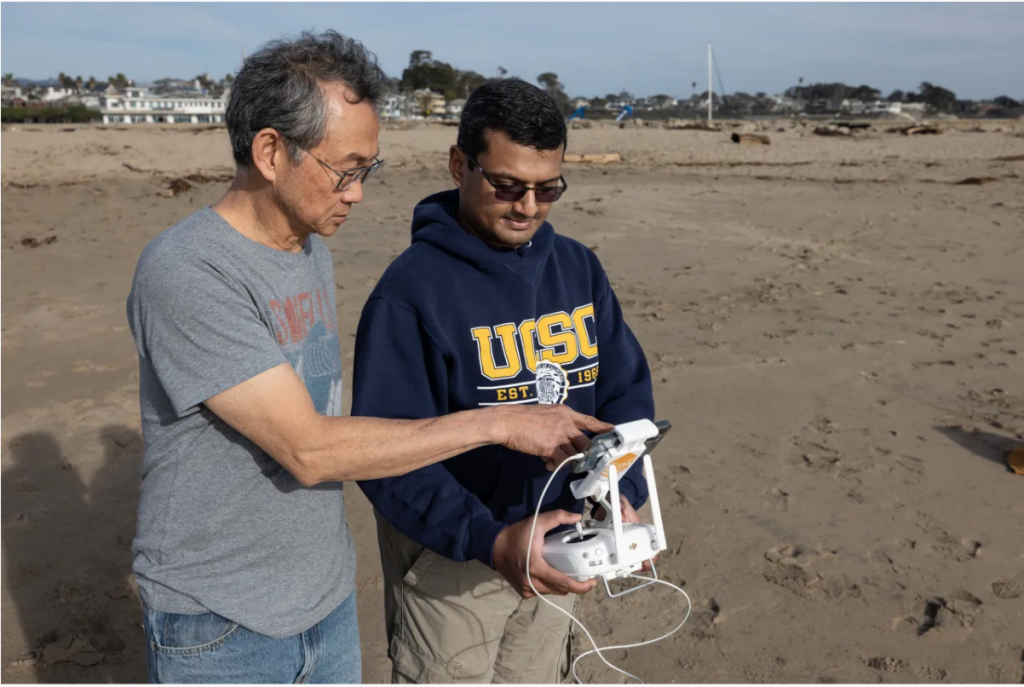
Alex Pang and Fahim Hasan Khan at Seabright State Beach in November. Pang and his team at UC Santa Cruz are working on algorithms — sets of programmed instructions — that can monitor shoreline change, identify rip currents and alert lifeguards of potential hazards. (Source: Joel Hersch of UCSC Center for Coastal Climate Resilience)
ML Helps Algorithms Perfect Riptide Prediction in UC Santa Cruz Research
According to a story in the santacruzsentinel.com, researchers at the University of California at Santa Cruz have developed an AI that monitors waves at the beach and predicts when currents or rip tides become dangerous for swimmers.
The story, later reported on foxnews.com, describes how researchers led by Professor Alex Pang developed the algorithms when he came up with the idea while windsurfing with friends and realized how difficult rip currents are to spot with an untrained eye. He couldn’t pick them out himself by simply looking at the surf. Foxnews.com reported:
For the AI research, Pang and other researchers partnered with National Oceanic and Atmospheric Administration (NOAA) scientist Gregory Dusek, who, according to the agency, developed a forecast model to predict the hourly probability of rip currents for up to six days out.
An existing rip tide detection model is being upgraded through machine learning that trains the AI to better recognize dangerous conditions. The model then can alert lifeguards in real-time about impending rip currents.
“AI has been used to help enhance water safety in other ways as well. One local report, for example, followed a YMCA location in Ann Arbor, Michigan, that used tech from Israeli company Lynxight to detect swimmers in distress in its aquatic center to help prevent drownings.”
read more at siliconvalley.com







Leave A Comment